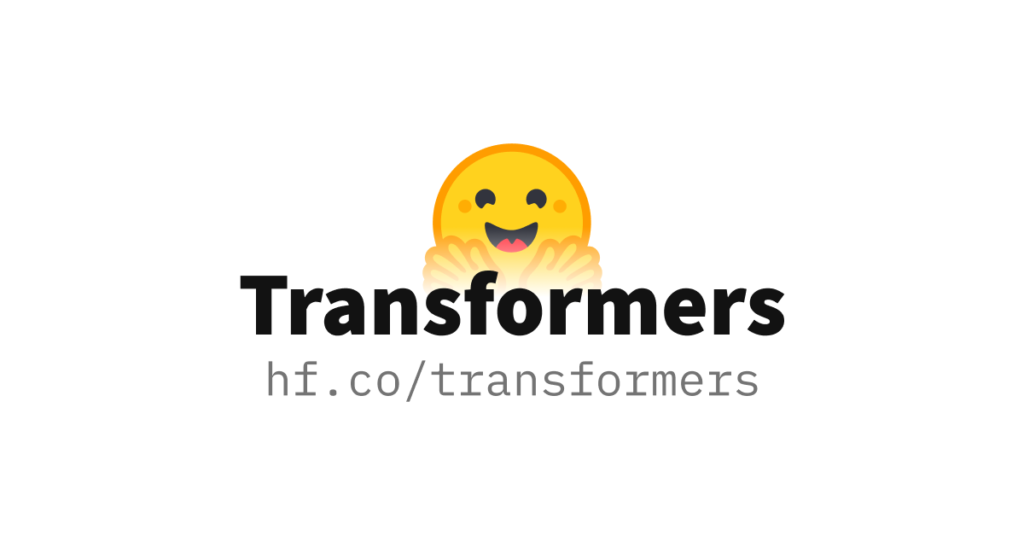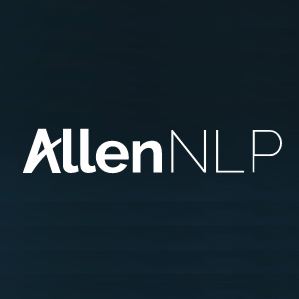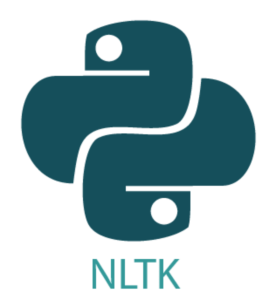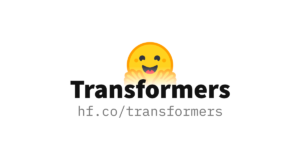
Natural Language Processing (NLP) is an interdisciplinary field that combines linguistics, computer science, and artificial intelligence to enable machines to understand, interpret, and respond to human language in a meaningful way. As modern technology advances, the ability to process and analyze vast amounts of textual data has become increasingly essential. NLP tools play a critical role in converting unstructured human language data into structured formats that can be analyzed and utilized effectively.
NLP has become integral to various applications, including chatbots, sentiment analysis, language translation, and more. These applications rely on sophisticated algorithms and models to process language data accurately and efficiently. The significance of NLP in today’s data-driven world cannot be overstated, as it empowers organizations to derive valuable insights from text data, automate complex tasks, and enhance user experiences through intelligent language interactions.
Several tools have emerged as leaders in the NLP domain, each offering unique features and capabilities that cater to different aspects of language processing. The four primary tools that will be explored in this blog post are Hugging Face Transformers, SpaCy, NLTK, and AllenNLP. Hugging Face Transformers is renowned for its extensive library of pre-trained models and ease of use in implementing state-of-the-art NLP techniques. SpaCy is celebrated for its speed and efficiency in performing various NLP tasks, making it a popular choice for industrial applications. NLTK, or the Natural Language Toolkit, is a comprehensive library that provides a wide range of functionalities for text processing and analysis. Lastly, AllenNLP is designed to facilitate research and development in deep learning-based NLP models, offering robust tools for model training and evaluation.
This exploration of leading NLP tools will provide insights into their functionalities, strengths, and applications, helping you understand how these tools can be leveraged to tackle complex language processing challenges in diverse contexts.
- Hugging Face Transformers: Revolutionizing NLP with State-of-the-Art Models
- SpaCy: Advanced NLP in Python
- NLTK (Natural Language Toolkit): A Comprehensive NLP Platform
- AllenNLP: Cutting-Edge NLP Research with PyTorch
- Comparing NLP Tools: Features and Use Cases
- Choosing the Right NLP Tool for Your Project
- Future Trends in NLP and the Evolution of NLP Tools
Hugging Face Transformers: Revolutionizing NLP with State-of-the-Art Models
The Hugging Face Transformers library has emerged as a cornerstone in the field of Natural Language Processing (NLP), offering a suite of state-of-the-art models that have significantly advanced the capabilities of NLP tasks. This library is renowned for incorporating cutting-edge models such as BERT (Bidirectional Encoder Representations from Transformers), GPT-3 (Generative Pre-trained Transformer 3), and T5 (Text-to-Text Transfer Transformer). These models have set new benchmarks in a variety of NLP applications, driving innovation and research forward.
One of the standout features of Hugging Face Transformers is its ease of use. The library is designed to be user-friendly, enabling both beginners and experts to leverage powerful NLP models with minimal effort. The API is intuitive, providing straightforward methods to implement complex tasks such as text classification, question answering, and language generation. This ease of use is complemented by detailed documentation and a supportive community, making it accessible to a wide range of users.
Versatility is another hallmark of the Hugging Face Transformers library. It supports a plethora of pre-trained models that are fine-tuned for various specific tasks, allowing users to select models that best fit their needs. This versatility extends to the ability to fine-tune these models on custom datasets, thereby tailoring them to unique applications and domains. Whether the task at hand is sentiment analysis, named entity recognition, or machine translation, Hugging Face Transformers offers robust solutions.
Moreover, the Hugging Face website (huggingface.co) serves as a comprehensive resource hub. It features an extensive model repository where users can access a wide array of pre-trained models, along with tutorials, datasets, and a collaborative platform for sharing and discussing projects. This ecosystem fosters a collaborative environment that accelerates the development and deployment of NLP applications.
In summary, Hugging Face Transformers has revolutionized the NLP landscape by providing state-of-the-art models that are both powerful and accessible. Its user-friendly interface, versatility, and extensive resources make it an invaluable tool for anyone working in the field of NLP.
SpaCy: Advanced NLP in Python
SpaCy is a powerful open-source library tailored for advanced natural language processing (NLP) tasks in Python. Highly regarded for its speed and efficiency, SpaCy is designed to seamlessly process large text datasets, making it a go-to tool for developers and researchers alike. One of the standout features of SpaCy is its robust tokenization process. Tokenization is the first step in any NLP project, breaking down text into individual tokens or words, which is essential for subsequent analysis.
Another notable feature of SpaCy is its Named Entity Recognition (NER) capability. NER involves identifying and classifying proper names in text, such as people, organizations, and locations. This is particularly useful in extracting meaningful information from unstructured data. Furthermore, SpaCy excels in dependency parsing, which involves analyzing the grammatical structure of a sentence to understand the relationships between words. This feature is critical for tasks such as text summarization, sentiment analysis, and question-answering systems.
One of the reasons SpaCy is favored in the NLP community is its remarkable processing speed. Written in Cython, SpaCy is optimized for performance, allowing it to handle large datasets efficiently. This makes it an excellent choice for real-time applications where speed is of the essence. Additionally, SpaCy’s ease of integration with other machine learning libraries like TensorFlow and PyTorch enhances its versatility, enabling the development of complex NLP pipelines with minimal effort.
For those looking to dive deeper into SpaCy, the official website (spacy.io) offers a wealth of resources. Comprehensive documentation, tutorials, and example projects are readily available, making it easier for both beginners and seasoned professionals to get started and master advanced NLP tasks. The community around SpaCy is also active and supportive, providing an additional layer of assistance through forums and discussion groups.
NLTK (Natural Language Toolkit): A Comprehensive NLP Platform
NLTK, or Natural Language Toolkit, is a widely utilized platform designed for building Python programs that handle human language data. Renowned in the field of Natural Language Processing (NLP), NLTK provides a unified suite of libraries and programs, essential for various text processing tasks. These include classification, tokenization, stemming, tagging, parsing, and semantic reasoning, making it a versatile tool for both novice and seasoned researchers.
A primary strength of NLTK lies in its comprehensive text processing libraries. Classification tools enable users to categorize text into predefined labels, while tokenization breaks down the text into manageable pieces, such as words or sentences. Stemming helps in reducing words to their root forms, aiding in the normalization of text. Tagging, another critical feature, assigns parts of speech to each word, facilitating syntactic analysis. Parsing goes a step further by analyzing the grammatical structure of sentences, and semantic reasoning allows for understanding and interpreting the meaning of text, which is pivotal for deeper NLP tasks.
NLTK is not just a tool for practical NLP tasks but also serves an educational purpose. Its extensive documentation and tutorials make it a popular choice for teaching and research. The toolkit is widely adopted in academic settings to introduce students to the intricacies of NLP, providing them with hands-on experience. The educational focus ensures that learners can grasp complex concepts through practical application, bridging the gap between theory and practice.
Additionally, NLTK’s official website, nltk.org, offers extensive resources, including a comprehensive book, numerous examples, and community forums. These resources are invaluable for both beginners and advanced users, fostering a collaborative environment where users can share knowledge and seek assistance. The active community support further enhances the usability and accessibility of NLTK, ensuring that users have the guidance and resources they need to effectively leverage the toolkit in their NLP endeavors.
AllenNLP: Cutting-Edge NLP Research with PyTorch
AllenNLP is a prominent open-source research library designed specifically for natural language processing (NLP) tasks, built on the robust PyTorch framework. Its primary objective is to facilitate the development and evaluation of sophisticated deep learning models tailored for various NLP applications. AllenNLP is lauded for its modular design, which significantly enhances the flexibility and efficiency of experimenting with diverse model architectures and datasets.
One of the standout features of AllenNLP is its comprehensive suite of pre-built models and components, which can be effortlessly customized or extended. This modularity allows researchers and developers to seamlessly integrate different layers, attention mechanisms, and other model components, fostering innovation and rapid prototyping. For instance, users can dynamically swap out different embedding layers or experiment with alternative neural network configurations, all within a cohesive and user-friendly framework.
In addition to its modular architecture, AllenNLP excels in providing a rich set of tools for data processing, model training, and evaluation. The library includes utilities for handling various data formats, constructing complex data pipelines, and performing rigorous model evaluations. This holistic approach ensures that all stages of the NLP model development lifecycle are well-supported, from raw data preprocessing to fine-tuning and testing sophisticated models.
The AllenNLP website (allennlp.org) serves as a valuable resource for both novice and experienced practitioners. It offers extensive documentation, tutorials, and example projects that elucidate the library’s capabilities and use cases. Furthermore, the website features an active community forum where users can seek advice, share insights, and collaborate on cutting-edge NLP research. This vibrant community support, coupled with the library’s robust design, makes AllenNLP an indispensable tool for advancing the state-of-the-art in natural language processing.
Comparing NLP Tools: Features and Use Cases
Natural Language Processing (NLP) has seen significant advancements, with tools like Hugging Face Transformers, SpaCy, NLTK, and AllenNLP emerging as key players. Each of these tools offers unique features, making them suitable for different use cases.

Hugging Face Transformers is renowned for its state-of-the-art pre-trained models. It supports a wide array of languages and tasks, making it ideal for scenarios requiring high accuracy and performance, such as text generation, translation, and sentiment analysis. However, its complexity can be a drawback for beginners. Hugging Face Transformers boasts a robust community, which ensures excellent support and continuous updates.

SpaCy is designed for industrial-strength NLP. Known for its speed and efficiency, SpaCy excels in tasks like tokenization, named entity recognition, and part-of-speech tagging. Its user-friendly API makes it accessible for both beginners and advanced users. SpaCy’s strong community and comprehensive documentation contribute to its ease of use. However, it may not be the best choice for tasks requiring deep learning, as it focuses more on traditional NLP techniques.

NLTK (Natural Language Toolkit) is a comprehensive library suitable for educational purposes and research. It provides a wide range of tools and resources, including corpora and lexical resources. NLTK is great for tasks like text preprocessing, classification, and parsing. While its versatility is an advantage, NLTK can be slower compared to other tools, and its steep learning curve might be challenging for newcomers. The community support is robust, thanks to its long-standing presence in the NLP field.

AllenNLP offers a research-focused approach, making it perfect for developing and experimenting with new models. It provides pre-built models and modules, facilitating rapid prototyping. AllenNLP’s strength lies in its flexibility and extensibility, although this can make it more complex to use compared to SpaCy or NLTK. Backed by the Allen Institute for AI, it provides excellent support and regular updates.
In real-world applications, the choice of tool often depends on the specific requirements of the project. For instance, Hugging Face Transformers is frequently used in advanced AI applications like chatbots and sophisticated language models. SpaCy is preferred for production-level applications that require speed and scalability, such as real-time information extraction. NLTK remains a staple in academic research and education, while AllenNLP is favored for experimental and cutting-edge NLP research.
Choosing the Right NLP Tool for Your Project
In the rapidly evolving field of Natural Language Processing (NLP), selecting the right tool for your project can significantly influence your outcomes. The choice between tools such as Hugging Face Transformers, SpaCy, NLTK, and AllenNLP hinges on several critical factors, including project requirements, dataset size, computational resources, and desired outcomes.
Firstly, consider the specific needs of your project. If you need state-of-the-art performance in tasks like machine translation, text summarization, or question answering, Hugging Face Transformers might be your best bet. It offers pre-trained models and an extensive library, facilitating quick deployment. Conversely, SpaCy is an excellent choice for projects that prioritize speed and efficiency, providing robust support for Named Entity Recognition (NER) and dependency parsing.
Dataset size and computational resources are also pivotal considerations. For handling large datasets, SpaCy’s efficient memory usage and processing speed are advantageous. On the other hand, if you are working with limited computational resources, NLTK’s lightweight framework might be more suitable. NLTK is particularly beneficial for educational purposes and smaller-scale projects, offering a comprehensive suite of text processing libraries.
Desired outcomes play a crucial role in determining the appropriate tool. If your goal is to conduct advanced research or develop custom models, AllenNLP offers a flexible and extensible platform tailored for deep learning applications in NLP. Its modular design allows for easy experimentation and integration of new algorithms.
When evaluating the trade-offs between these tools, consider their strengths and limitations. Hugging Face Transformers excel in versatility and performance but may require significant computational power. SpaCy is known for its speed and efficiency but might lack some advanced features available in other tools. NLTK offers simplicity and ease of use, while AllenNLP provides extensive customization options for research-driven projects.
Integrating these tools into your existing workflows and pipelines can be streamlined by leveraging their respective strengths. For instance, combining the speed of SpaCy for initial text processing with the advanced capabilities of Hugging Face Transformers for specific tasks can yield optimal results.
Future Trends in NLP and the Evolution of NLP Tools
As the field of Natural Language Processing (NLP) continues to advance, several emerging technologies and methodologies are poised to shape its future. Among these, transformer models have already demonstrated significant improvements in understanding and generating human language. Tools like Hugging Face Transformers have capitalized on transformer models, offering robust solutions for a wide range of NLP tasks. The trend towards more sophisticated transformer architectures suggests that future iterations of these tools will become even more powerful and efficient.
Another critical trend in NLP is the growing reliance on transfer learning. This approach leverages pre-trained models on large datasets, which are then fine-tuned for specific tasks, resulting in enhanced performance and reduced training times. SpaCy, for example, has integrated transfer learning capabilities, allowing users to build customized NLP models with greater ease and accuracy. As transfer learning techniques evolve, we can expect tools like SpaCy to offer even more seamless and efficient model customization.
Unsupervised learning is also gaining traction in the NLP landscape. This methodology allows models to learn from unlabelled data, significantly broadening the scope of data that can be utilized. NLTK, known for its comprehensive suite of libraries, is likely to incorporate more unsupervised learning algorithms, enabling users to extract insights from vast amounts of raw text data without the need for extensive manual labeling.
Continuous learning and adaptation are essential in the fast-paced field of NLP. Tools must keep up with the ever-changing language dynamics and the increasing complexity of user requirements. AllenNLP, with its focus on research and development, is expected to drive innovation in this area by integrating cutting-edge research findings into practical applications.
Looking ahead, we can anticipate significant advancements in the capabilities of NLP tools like Hugging Face Transformers, SpaCy, NLTK, and AllenNLP. These tools will likely evolve to handle more complex tasks, offer greater accuracy, and provide more user-friendly interfaces. As the field progresses, the synergy between emerging technologies and existing tools will continue to push the boundaries of what is possible in Natural Language Processing.







